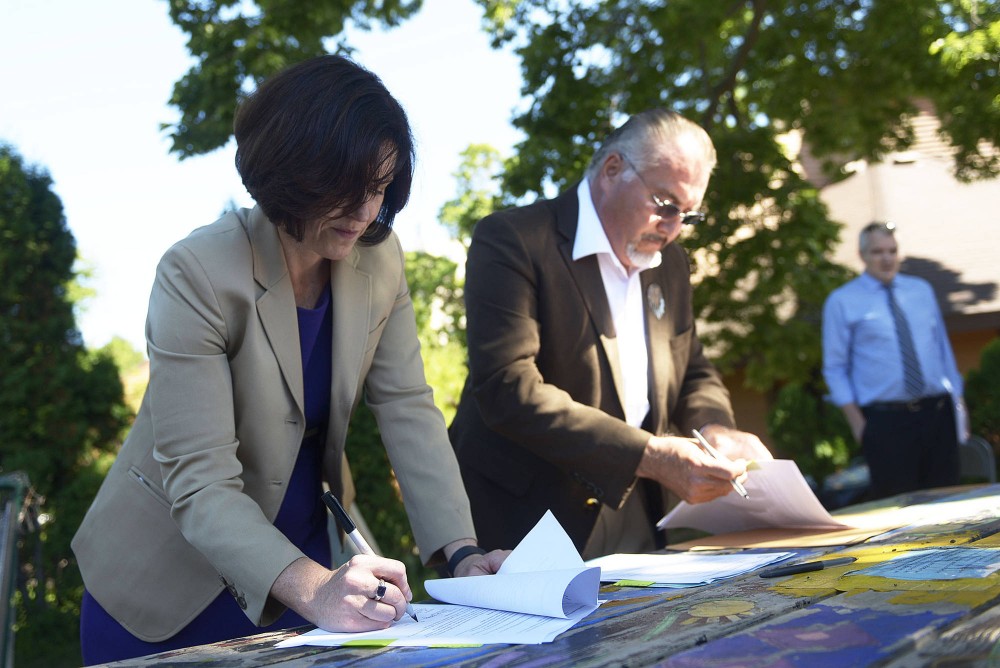For centuries, the indigenous communities of the Americas cut down and burned vegetation, using the remains to fertilize the soil underneath.
Now, in locations around the Twin Cities, city leaders are working with a local Native American community and the University of Minnesota to test a modern application of the age-old technique.
In two separate studies, the updated farming technique uses biochar — a soil addition created by burning wood waste products — mixed with compost to try and shrink trees’ mortality rates and help plants grow.
The city’s study aims to discover how soil additions impact urban farms. Officials have added biochar to five gardens around the metro area this year.
“We’re interested in promoting healthy foods and getting [the foods] in homes and in bodies,” said Ward 2 City Councilman Cam Gordon, who represents the University and surrounding neighborhoods.
At the same time, University researchers are studying the effects of mixing biochar with the soil around nearly 450 trees lining Minneapolis’ streets, said Chad Giblin, a research fellow in the department of forest resources who’s working on the study.
The biochar for the two studies comes from a lumber mill in Missouri, and the Shakopee Mdewakanton Sioux Community helps mix it with compost at its recycling facility, said Jim Doten, an environmental services supervisor for the city is helping conduct both studies.
Additives like biochar can help hold water in the soil for trees to use, said Gary Johnson, a professor in the forest resources department, adding that urban soil can sometimes lack nutrients.
“There are some pretty harsh sites along boulevards,” he said. “We’re trying to give trees a head start.”
Making sure trees can grow quickly is especially important now because of the recent infestation of emerald ash borers, insects that kill ash trees, Doten said.
As the city removes ash trees, he said, they’re replacing them with other tree species and using biochar, which is anticipated to help the replacements grow faster.
University researchers and city staff have planted 11 tree species with biochar, and they’ll monitor the effects over time, he said.
“[Biochar] works really well in depleted soils,” Doten said. “So we’re hoping the trees will grow pretty quickly.”
A rich history
Burning vegetation over farmland and using the remains to hold nutrients is a technique that dates back hundreds of years, Doten said, and similar products like biochar still have modern uses.
For example, the Shakopee Mdewakanton Sioux Community uses biochar in an urban garden called the Mashkiikii Gitigan, which is Ojibwe for Medicine
Garden. Members of the community grow vegetables and tobacco in biochar-enriched plots.
“One of the most important things is teaching the youth how to grow and harvest food,” said Austin Bartold, an executive chef for a local community center who supplements his cooking with ingredients from the Mashkiikii Gitigan.
Bartold, who is Native American, said when he was a child his family would cultivate its own garden using traditional burning techniques.
Doten said the market for biochar is negligible right now. But Gordon said if it proves beneficial, he hopes that the product’s use will eventually grow enough to spread across the city.
“It’d be great to see if these gardens bring bigger yields,” Gordon said. “What we have right now is a pilot, but maybe we’ll create a market for it.”

















